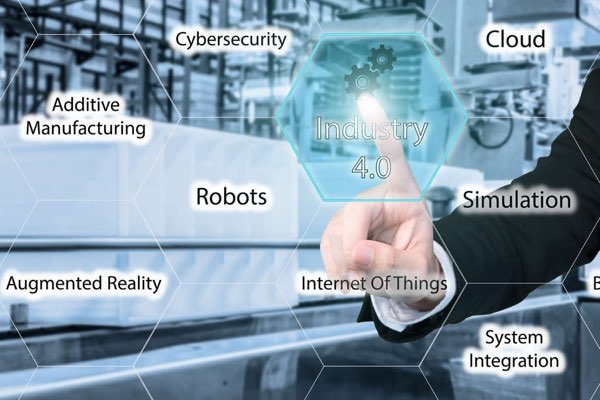Selecting and implementing any enterprise technology is not a rapid process. And the internet of things (IoT), as an enterprise technology, has to contend with some strong headwinds.
An August 2018 study from the management consulting firm Bain & Company reveals that would-be IoT adopters “believe that vendors have made little progress on lowering the most significant barriers to IoT adoption—including security, ease of integration with existing information technology (IT) and operational technology (OT) systems, and uncertain returns on investment. So these customers have extended their expectations about when those use cases will reach scale in their organizations. On average, they are planning less extensive IoT implementations by 2020 than they were planning just a couple of years ago.”
Rapid IoT growth trend
Yet even with what appears to be a more incremental approach cited by Bain, important measures of IoT sophistication are growing at double digits year-over-year. At least according to an IFS research study conducted in November 2018 among 200 North American executives that reveals substantial year-over-year gains in IoT usage in industrial companies. Data was collected in both 2017 and 2018, revealing several interesting trendlines over the 12-month period.

The study shows:
- Companies collecting IoT data on entire work cells or production lines rather than individual machine components or individual machines have increased by 17 percent.
- This in turn enables more advanced use cases, which helps explain a 30 percent increase in use of IoT to support asset performance management.
- Respondents using IoT to monitor their customers’ equipment saw a 10 percent increase, potentially signaling transformational approaches to field service management.
While internet of things use cases are becoming more sophisticated, a substantial gap remains between connected devices and transactional software used to run the business—most notably enterprise resource planning (ERP).
The percentage of respondents who have integrated IoT data streams with their enterprise resource planning (ERP) software has stayed the same, however. And to a certain extent ERP software, as a system of record, may continue to be a constraint for companies intent on adopting transformational business models built around IoT data.
The IFS data point echoes Bain’s findings that vendors have been slow to offer manageable routes to adoption, specifically when it comes to integration with operational technology like ERP software. Year-over-year, the percentage of respondents in the IFS sample who have integrated IoT data streams with their ERP software hovers at 16 percent. This represents a barrier to IoT delivering new business and revenue opportunities that can result when connected devices can trigger business processes in the transactional system used to run the business.
There are logistical and technical barriers to getting internet of things and ERP to talk to each other. The internet of things tends to create data in a continuous stream. As often as several times a second, a sensor may send to a plant historian or supervisory control and data acquisition (SCADA) system a record of conditions in a piece of equipment or component at a given time. ERP, on the other hand, requires data that describes a defined business event. Project teams must define what data the ERP should collect and must then determine how an IoT discovery tool can convert the stream-of-consciousness data style of IoT into something that tells ERP that a piece of equipment needs to be serviced, a technician should be dispatched to a customer site or that a production line should be slowed down to prevent quality issues.
“Because there is such a wide range of PLC and SCADA systems, the challenge has been to combine and consolidate them in a logical way to ERP,” IFS President of Industries Antony Bourne said. “IoT used to have to do with equipment monitoring from the field rather than just on the shop floor within the four walls of a business. We’ve seen that IoT can quickly turn into a spider’s web nightmare, mapping multiple systems together. Enterprise software will increasingly need to offer streamlined approaches to this arduous task.”
But the upside is tremendous, according to IFS Chief Product Officer, Christian Pedersen.
“Enterprise IoT integration allows you to take incoming data from connected devices and use it to create business events in ERP,” Pedersen said. “The software can either present that data to humans or act on it as it comes in. Think of the potential for internet of things constantly streaming into ERP through the business logic, where artificial intelligence (AI) applications constantly learn and apply that learning by creating new business logic. That is when AI will see the real breakthrough—and when ERP systems will dramatically transform, changing the way we think about them.”
Passivity has its cost
IoT is not a technology that can simply be implemented without some degree of introspection. The internet of things and other transformational technologies must be used to solve a defined problem or take a business operation from an existing state to a future state. The goal may be to reduce cost, but increasingly IoT is being used to create new revenue or revenue opportunities. This means change and disruption not just from a technological standpoint, but also in the underlying business model.
Antony Bourne, President, IFS Industries added, “IoT is a big disruptor. But if industrial companies do not embrace digital transformation, chances are that their business will be the one that’s disrupted by more agile competitors. IoT helps companies transform their businesses, making them more efficient, enabling them to explore new revenue sources and fundamentally changing business processes. One key constraint is the lack of skilled resources with the ability to deploy transformation technologies. Experienced partners both in enterprise software and technology platforms can help overcome these constraints and identify a proven way forward.”





